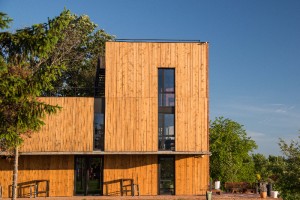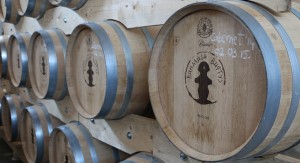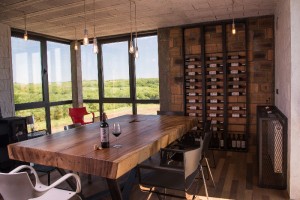A group of friends, 28 hectares of land and one mission – introducing the wine-growing estate Virtus calling the Serbian village of Viteževo its home.
After skimming the July part of our travel diary, which told us a story of the prosperous wine-growing country Slovenia, we turn our gaze to the south – to be precise – to the likewise ex-Yugoslavian Serbia.
Serbia? Most certainly! Similar, to its more known neighbours Croatia and Slovenia, the Balkans heartland looks back on a 2000-year-old wine-growing history repeatedly finding itself in difficulty, either through the Ottoman conquest in the 14th century or, regarding quality, through the large-scale production while being a part of Tito’s Yugoslavia. Also, the bloody civil war of the 90s crosses our mind when we hear the name of Serbia, whereas many desiring success wine makers – continuing the great wine tradition of the country – as well as inviting wine-growing regions and until today existent indigenous grape varieties are not much known.
From among roughly 54.000 hectares of vineyards, regions of the Croatian border close Fruška Gora, East Serbian Timočka Krajina, Toplički okrug near to Kruševac and the areas of the Great and South Morava belong to the major wine producing territories of the country.
The province of Great Morava – to be more precise – the beautiful place called Viteževo, located 50 km southeast of Belgrade, is the home of 2010 established imposing wine-growing estate Virtus, in 2016 successfully participating in the first PAR® Wine Award International. Friends and wine enthusiasts created a working team to let the grapes of the climatically favoured terroir shine in new splendour. In this interview, Milorad Halavanja reveals their approach, the choice of the varieties and their vision for the future of the wine tourism in Serbia.
Mr. Halavanja, the Virtus winery is not the work of a single person, but rather the doing of a whole community of wine enthusiasts. Who are the people behind this project?
M. Halavanja: Exactly, behind Virtus Winery there are several wine lovers, among others good friends accomplished in other activities, who have recognized the potential of raising vines and producing wine. The winery was founded in 2011 and then began to raise the vineyards at a site that is traditionally known in Serbia as wine region, and if we speak regarding classification, the winery complex with 17 hectares of vineyards is located in the territory of the Mlava region, near the village Viteževo in central-eastern Serbia.
The design of your logo, but also your slogan “Read the wine – taste the history” express the importance, Serbia’s history as a wine country has for your company philosophy. How would you describe the „mission” of Vinarija and its founders?
M. Halavanja: Our mission is to revitalize the winegrowing story in this part of Serbia and return to the tradition, but with modern methods and techniques of production that are used in some of the most famous wine regions of Europe and the world. This part of Serbia has a very high potential when growing grapevine is in question, but we are aware that it will take a lot of effort, hard work and aggression to reach the desired goal. As far as the logo is concerned, it is taken from the Vincent culture, the ancient civilization that lived a few thousand years ago in this region, and the figurine itself represents a woman of disheveled hands that symbolize goodwill and welcome, and in the first place, what will you find when you come to Virtus.
Do the old traditions also reflect in the way you make wine, i.e. in your cellar technique or are your wines rather modern in terms of vinification? How would you describe your style?
M. Halavanja: As I already mentioned, we use modern techniques in production, but with the goal that our lovers can unify through our wines the character of the climate, the character of the variety, and finally our vision and philosophy somewhere. Of course, we keep track of trends and adapt to the needs of the market and our consumers, because at the end of everything, all this is done for them.
Your vineyards cover 27,5 hectares: Which grape varieties do you cultivate? Do autochthonous varieties play a role?
M. Halavanja: Actually, the vineyards which give grapes currently cover 15 hectares of land; we have two hectares of young vineyards and about 10 acres of land that is in preparation for raising the vineyard. There are some plans to spill, but we can talk about that on some other occasion.
In the vineyard, there are predominantly international varieties of vines. If we start from white varieties, there are Sauvignon Blanc, Pinot Grigio and Gewurztraminer and from black Marselan, Pinot Noir, Cabernet Sauvignon and Serbian variety Prokupac.
Since the human being is sensual one – which flavours await us within a glass of of your Prokupac and is there a certain typical dish, you would serve with it?
M. Halavanja: Prokupac is a variety that gives specific red wines, with characteristic aromas and taste, which again can have certain variations depending on which wine site they come from. Generally, what is caught in Virtus Prokupac is a refined, aromatic scent with minerals and selected flavours, as well as baroque and sophisticated tannins that make this wine a very good choice when, besides the wine on the table, there are traditional Serbian dishes such as pork and lamb roasting, specialties from wild boar and venison, musk, sarma.
Not only is your winery quite an appealing piece of architecture, but it’s also embedded in beautiful scenery and not far from the capital. Is tourism, especially wine tours, a growing topic in Serbia?
M. Halavanja: Wine culture goes along the upward path, but due to some past times that slowed us down, it will take us a long time to come at least close to the level of the leading wine countries. Virtus is designed to offer pleasure not only through wine, but to provide visitors with a holistic experience along with a tour of the vineyards, the winery and finally with enjoying the wines along with a beautiful view of the surrounding landscape. Wine tourism in Serbia is promising, and I am sure that tourists coming to Serbia will be happy to learn about the beauty of our country, to which I hope not only our winery contributes, but also a great many other wonderful wineries throughout Serbia.
Last but not least, a sales question: Do you mainly produce for your domestic market or do you also sell your wines internationally? Are there any sources of supply in Germany?
M. Halavanja: Currently, we are mostly present in the domestic market, but there were also exports to Switzerland and Russia. For the beginning, it was important for us to show and prove ourselves within the home scene, but of course, we are thinking of moving more seriously to foreign markets, among others, to Germany in which we are still unfortunately not present, but we hope that those roads will soon be opened.
Thanks so much for your time! We wish you the best of luck and success and look forward to tasting the next Virtus vintages.





